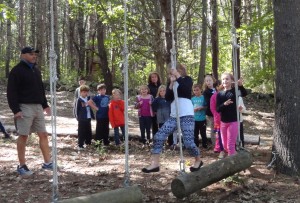 It was so nice to see many of you at Curriculum Night. We appreciate your support in making this a great year. Thank you.
It was so nice to see many of you at Curriculum Night. We appreciate your support in making this a great year. Thank you.
Naming Habits that Lead to Success
and Discovering the Many Ways We Are Smart – S.E.L.
We’ve continued on with our exploration of how we are smart and habits that lead to success. We read about Henri Rousseau. He painted because he loved to paint and though he never left the city of Paris the jungle fascinated him and found its way into his art. He painted as he thought it must be and entered annual exhibitions where he was horribly ridiculed over and over. We all agreed we would have either given up painting, or only painted in secret. We decided his habits for success were believing in himself, practicing, having courage and risk-taking.
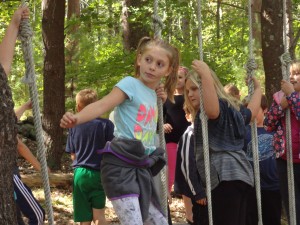 We also read about Michael Jordan as a boy. He loved basketball, but he was short and could never get the ball past the tall guys. He stopped playing in games for a while, waiting to grow. While he waited, he practiced and practiced. Eventually he went back to the game and… we know where that took him. His habits for success were determination, practice and focus.
We also read about Michael Jordan as a boy. He loved basketball, but he was short and could never get the ball past the tall guys. He stopped playing in games for a while, waiting to grow. While he waited, he practiced and practiced. Eventually he went back to the game and… we know where that took him. His habits for success were determination, practice and focus.
Finally we read Junkyard Wonders, a continuation of Patricia Polacco’s school learning story. If you haven’t read this book with your child, please do. There is so much to think and talk about. It can be read over and over again. We talked about how schools have changed and become more inclusive and more aware of learning differences and needs. We talked about friendship and determination, exclusion and fear of difference. We admired the “Wonders” for their support and caring of each other and for moving forward despite all they faced.
 We can see parts of ourselves in the biographies we are reading. We can feel what courage and determination it takes to keep going. We also know that it is sometimes hard to believe in ourselves or ignore teasing and unkind taunts. We can also (when we are honest) recognize our less than kind selves. We all have choices – how do we want to grow our intelligences? What habits of success do we want to foster and practice?
We can see parts of ourselves in the biographies we are reading. We can feel what courage and determination it takes to keep going. We also know that it is sometimes hard to believe in ourselves or ignore teasing and unkind taunts. We can also (when we are honest) recognize our less than kind selves. We all have choices – how do we want to grow our intelligences? What habits of success do we want to foster and practice?
Exploring Informational Writing
Over the last few weeks we have been reading a wide variety of informational books. We’ve explored the choices that authors have made of organizing their information. Some information is told sequentially. Some information is shared in categories and sub-topics in a more descriptive manor. Other information is shared in a compare/contrast or cause and effect format. In addition to the organizational choices for writing, we’ve explored some of the craft choices authors make. Sometimes authors make characters to share the information. We read I Fly! where the information is shared through the voice of the fly as he teaches the children in a classroom that he is a fascinating as a butterfly.
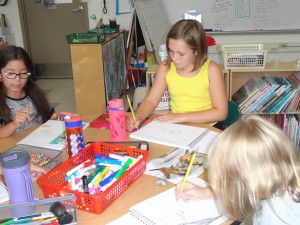 This learning is launching our global geography, habitat and animal research project. We are looking forward to
This learning is launching our global geography, habitat and animal research project. We are looking forward to
Many Models For Multiplication
We’ve been learning various models for multiplication. We’re exploring repeated groupings, arrays and the relationship between addition and multiplication. Multiplication seems like it must be hard – it’s new and many of the children feel that they don’t know it. But we’ve come to realize that it is not that hard – in fact at the beginning we already know a lot. When we count by 2’s, 5’s and 10’s that’s a first step. You’ll see some papers in the folders this week where the class was challenged to think about repeated groups and what models represent addition and what models represent multiplication. Each week the concept becomes clearer.
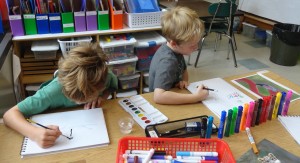 Bits and Pieces –
Bits and Pieces –
- Don’t Forget! – 3rd grade school pictures will be taken October 3, in the afternoon.
- We’re beginning our 3rd chapter read-aloud, The Trumpet of the Swan. This fits with our science inquiry of habitats. It connects to our 3rd Grade Zoo project and will help us as we learn more about how to document our thinking while reading.
- Mrs. Mariotti is starting a weekly luncheon with 3rd grade. She’ll be inviting four children each week to lunch for small group conversation. Everyone will have a turn and then we’ll begin again.


 Ask your child about The River Runner challenge. It requires a great deal of self-management and self-awareness, while at the same time being socially aware as well. Ask your child they remember most about the activity? What was his or her biggest challenge within the activity?
Ask your child about The River Runner challenge. It requires a great deal of self-management and self-awareness, while at the same time being socially aware as well. Ask your child they remember most about the activity? What was his or her biggest challenge within the activity?
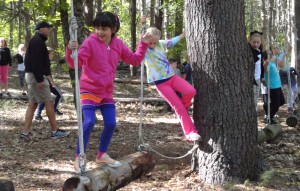
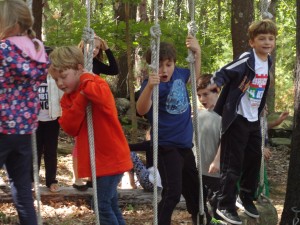
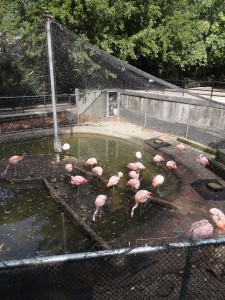
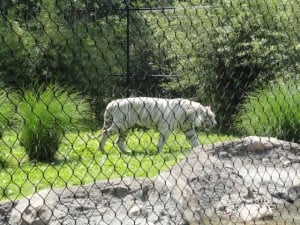
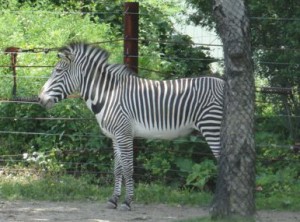

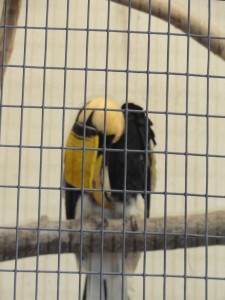
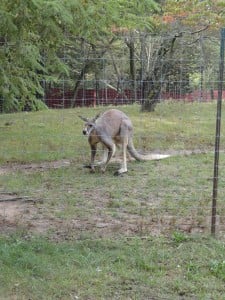
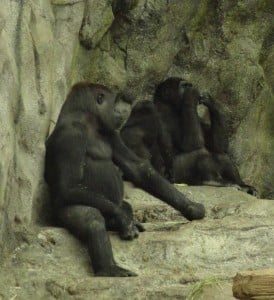
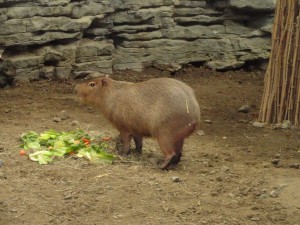

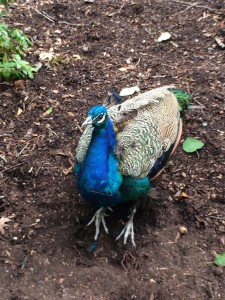


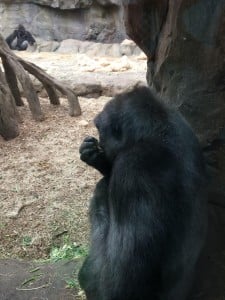
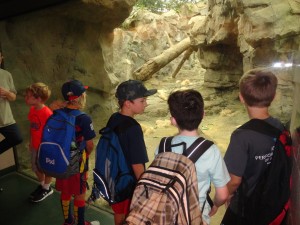 We have had another great week of working and thinking together. We are thinking about “how we are smart” as we learning about the Theory of Multiple Intelligence and growth mindset. The week’s trip to the zoo was wonderful. The weather was glorious. The animals were stunning and your children were fabulous and respectful zoo visitors. It was interesting to note how many of the animals at the zoo are endangered and threatened. The children are curious about that and feel that it is one of the “pros” for having zoos.
We have had another great week of working and thinking together. We are thinking about “how we are smart” as we learning about the Theory of Multiple Intelligence and growth mindset. The week’s trip to the zoo was wonderful. The weather was glorious. The animals were stunning and your children were fabulous and respectful zoo visitors. It was interesting to note how many of the animals at the zoo are endangered and threatened. The children are curious about that and feel that it is one of the “pros” for having zoos. After reading about many different people we feel we have a clearer sense of what the different intelligences are and how they look. We read picture book biographies about Snowflake Bentley, Abraham Dee Bartlett, Patricia Polacco, and Alan Rabinowitz, and Jane Goodall. As we read we tried to connect anecdotes from the stories with the different ways we are smart. We discovered it is more challenging to recognize some of the intelligences because they are ways of thinking. They don’t easily show on the outside. As we’ve been reading, we’ve been thinking about our interests and strengths. We completed a questionnaire that might help us see how we are smart in all eight ways. We are looking forward to discovering more about ourselves and all the ways we are smart.
After reading about many different people we feel we have a clearer sense of what the different intelligences are and how they look. We read picture book biographies about Snowflake Bentley, Abraham Dee Bartlett, Patricia Polacco, and Alan Rabinowitz, and Jane Goodall. As we read we tried to connect anecdotes from the stories with the different ways we are smart. We discovered it is more challenging to recognize some of the intelligences because they are ways of thinking. They don’t easily show on the outside. As we’ve been reading, we’ve been thinking about our interests and strengths. We completed a questionnaire that might help us see how we are smart in all eight ways. We are looking forward to discovering more about ourselves and all the ways we are smart.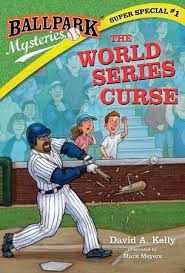 Super Special #1 the Ballpark Mysteries series,
Super Special #1 the Ballpark Mysteries series, 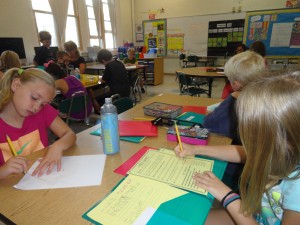
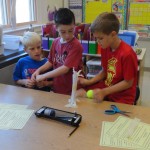
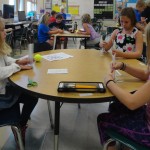 We have had a fun, full week. We’ve interviewed each other. We worked in small groups to build “tennis ball” towers and to uncover ways we can be better communicators. We read together and wrote together and created together. We thought about what we could make a positive mark on our world and took our first step.
We have had a fun, full week. We’ve interviewed each other. We worked in small groups to build “tennis ball” towers and to uncover ways we can be better communicators. We read together and wrote together and created together. We thought about what we could make a positive mark on our world and took our first step.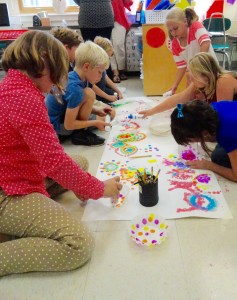
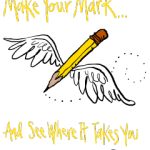 September 15-ish is International Dot Day. The day celebrates the publication of The Dot by Peter Reynolds. This year 6,945,243 people joined the celebration from 139 countries around the world. Dot Day celebrates creativity and encouragement. If you haven’t read the book, either by yourself or with your child, I hope you will. Kids relate very strongly with Vashti and celebrate her participation in the school art show with knowing smiles. I appreciate the message to me in the pages – one small act to appreciate and acknowledge effort and risk-taking can make a difference. Vashti was changed by her teacher’s choice, and she in turned inspired others.
September 15-ish is International Dot Day. The day celebrates the publication of The Dot by Peter Reynolds. This year 6,945,243 people joined the celebration from 139 countries around the world. Dot Day celebrates creativity and encouragement. If you haven’t read the book, either by yourself or with your child, I hope you will. Kids relate very strongly with Vashti and celebrate her participation in the school art show with knowing smiles. I appreciate the message to me in the pages – one small act to appreciate and acknowledge effort and risk-taking can make a difference. Vashti was changed by her teacher’s choice, and she in turned inspired others.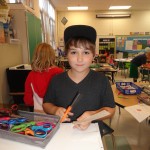
 creativity. Make a mark, and see where it takes you!
creativity. Make a mark, and see where it takes you!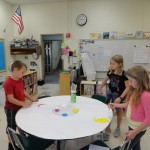
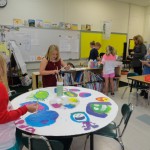 The other centers are “games.” Circles and Stars is an introduction to multiplication. It is a great game. I’ve included a set of directions in your child’s folder if you’d like to play. How Close to 100? explores place value and subtraction. Again you can easily play this at home with a scrap piece of paper. Taking all 7 turns, who can get closest to zero by subtracting the rolls of a die – either tens or ones. For example a roll of 2 can be subtracted as 2 or 20. The final game, Roll 2 Dice, helps children practice addition facts and develops their sense of probability (if the dice are actually rolled.)
The other centers are “games.” Circles and Stars is an introduction to multiplication. It is a great game. I’ve included a set of directions in your child’s folder if you’d like to play. How Close to 100? explores place value and subtraction. Again you can easily play this at home with a scrap piece of paper. Taking all 7 turns, who can get closest to zero by subtracting the rolls of a die – either tens or ones. For example a roll of 2 can be subtracted as 2 or 20. The final game, Roll 2 Dice, helps children practice addition facts and develops their sense of probability (if the dice are actually rolled.)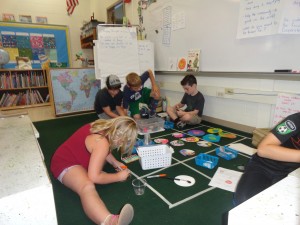 This week we’ve been reading poems and books about reading and storytelling. We’ve used these books to open up ideas about how we each can make our reading abilities grow. Reading becomes more about thinking in third grade. We develop strategies for keeping track of questioning, inferring and reflecting. This week, reading both picture and chapter books, we discovered ways we could help ourselves get into a book before reading. We looked at the cover, read the “blurb” or “teaser” and glanced at the first page to get ready to understand more and better. We are going to try this strategy together for another week and then give it a go independently. Recording thinking, either in words or pictures or a combination, is a challenge. At first most 3rd graders will be saying, “I don’t know” or “I don’t have a question” or “I don’t have an idea.” But with time and encouragement they will grow to be more aware of their ideas, how they grow and how they build. The more they reflect and capture their thinking, the stronger they will become as
This week we’ve been reading poems and books about reading and storytelling. We’ve used these books to open up ideas about how we each can make our reading abilities grow. Reading becomes more about thinking in third grade. We develop strategies for keeping track of questioning, inferring and reflecting. This week, reading both picture and chapter books, we discovered ways we could help ourselves get into a book before reading. We looked at the cover, read the “blurb” or “teaser” and glanced at the first page to get ready to understand more and better. We are going to try this strategy together for another week and then give it a go independently. Recording thinking, either in words or pictures or a combination, is a challenge. At first most 3rd graders will be saying, “I don’t know” or “I don’t have a question” or “I don’t have an idea.” But with time and encouragement they will grow to be more aware of their ideas, how they grow and how they build. The more they reflect and capture their thinking, the stronger they will become as 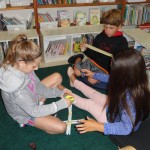 learners and problem solvers. That’s what we want!
learners and problem solvers. That’s what we want!
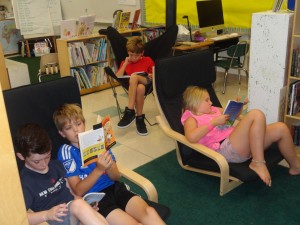 This week we’ve focused on habits that lead to success and rules for our classroom that will allow us all to be successful. We’re still working to fine tune them and to make sure everyone knows what they look and sound like. Transitions are a challenge for our class. Lining up can take a very long time and moving respectfully through the halls is not something 3E does well. Those who are focused and calm have waited patiently for their classmates to stop talking. We’ll get better, but it will take everybody’s effort. Ask your child how they think they are doing and if they have suggestions of changes we can make to improve.
This week we’ve focused on habits that lead to success and rules for our classroom that will allow us all to be successful. We’re still working to fine tune them and to make sure everyone knows what they look and sound like. Transitions are a challenge for our class. Lining up can take a very long time and moving respectfully through the halls is not something 3E does well. Those who are focused and calm have waited patiently for their classmates to stop talking. We’ll get better, but it will take everybody’s effort. Ask your child how they think they are doing and if they have suggestions of changes we can make to improve. We finished our first chapter read-aloud, The One and Only Stuey Lewis. Stuey is in second grade in this book. He’s not feeling great about himself as a reader at first, but by the end of the year he knows he has grown. He’s worried about playing soccer as well as his older brother, the soccer star. He decides not to try because he’ll never be as good only to discover that in 2nd grade his brother wasn’t much of a player either. He got better by practicing and playing. We have a lot to learn from Stuey.
We finished our first chapter read-aloud, The One and Only Stuey Lewis. Stuey is in second grade in this book. He’s not feeling great about himself as a reader at first, but by the end of the year he knows he has grown. He’s worried about playing soccer as well as his older brother, the soccer star. He decides not to try because he’ll never be as good only to discover that in 2nd grade his brother wasn’t much of a player either. He got better by practicing and playing. We have a lot to learn from Stuey.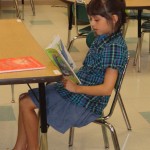 As a class we’ve been reading poems and books about reading and discussing how we can grow as readers by making sure we are choosing good fit books. It seems as though most all of the children have found books they are enjoying and are feeling successful in reading. They’re enjoying old favorites and finding new series and picture books to enjoy.
As a class we’ve been reading poems and books about reading and discussing how we can grow as readers by making sure we are choosing good fit books. It seems as though most all of the children have found books they are enjoying and are feeling successful in reading. They’re enjoying old favorites and finding new series and picture books to enjoy.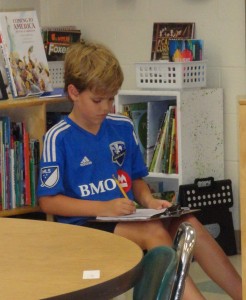 We are working to develop and extend our writing stamina during workshop time. This year the children have been asked to write pieces of their choosing in their writer’s notebook. It has been interesting to see how children approach this open writing option. Some wrote lists, others wrote poems and still others began stories. Some are retelling tv shows and some are writing personal narratives. Some feel they have nothing to write – and they haven’t yet.
We are working to develop and extend our writing stamina during workshop time. This year the children have been asked to write pieces of their choosing in their writer’s notebook. It has been interesting to see how children approach this open writing option. Some wrote lists, others wrote poems and still others began stories. Some are retelling tv shows and some are writing personal narratives. Some feel they have nothing to write – and they haven’t yet.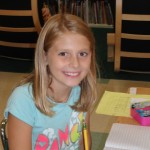 cream, playing a game are often easiest to write because they are one clear event.
cream, playing a game are often easiest to write because they are one clear event. This week we’ve been exploring patterns in math and thinking about equivalence. We’ve been looking for the pattern on our math calendar. We think we have identified the pattern. Next week we will be sure and will be able to discover the different ways it models multiplication. We also talked about 100 – it seemed like a lot until we could see that 10 of them
This week we’ve been exploring patterns in math and thinking about equivalence. We’ve been looking for the pattern on our math calendar. We think we have identified the pattern. Next week we will be sure and will be able to discover the different ways it models multiplication. We also talked about 100 – it seemed like a lot until we could see that 10 of them 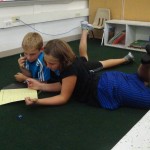 make a thousand that can be posted right on our bulleting board. We’ll be exploring place value and growing our understanding of amounts into the ten thousand place.
make a thousand that can be posted right on our bulleting board. We’ll be exploring place value and growing our understanding of amounts into the ten thousand place.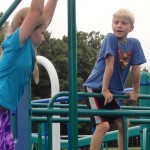
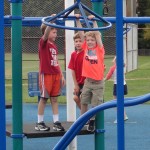
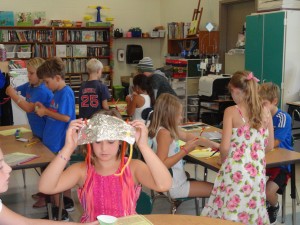 We are off to a great start in 3E. I hope you’ve been hearing about some of the things we’ve been doing. In case you haven’t, each week I will do my best to share happenings from our classroom in a newsletter. My hope is that the notes will provide you with opportunities to talk about what is going on at school. We all know children thrive best when they know home and school are connected. This is one of my attempts to build that connection. If you read our blog, 3E News, at 3enews.edublogs.org you will also find pictures of the students working, covers of books we are reading and other links and connections. If you subscribe to the blog by email (that option is found on the right-hand sidebar) you’ll get notification of new posts.
We are off to a great start in 3E. I hope you’ve been hearing about some of the things we’ve been doing. In case you haven’t, each week I will do my best to share happenings from our classroom in a newsletter. My hope is that the notes will provide you with opportunities to talk about what is going on at school. We all know children thrive best when they know home and school are connected. This is one of my attempts to build that connection. If you read our blog, 3E News, at 3enews.edublogs.org you will also find pictures of the students working, covers of books we are reading and other links and connections. If you subscribe to the blog by email (that option is found on the right-hand sidebar) you’ll get notification of new posts.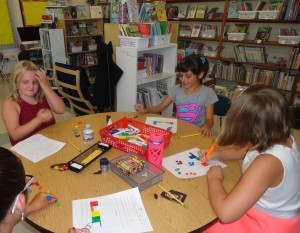 We’ve focused on teamwork through the hula-hoop challenge, the name game and the Ping-Pong ball challenge. We’ve noticed that staying calm and being focused helps us succeed. We’ve noticed that sometimes working slowly and intentionally leads more easily to success as well.
We’ve focused on teamwork through the hula-hoop challenge, the name game and the Ping-Pong ball challenge. We’ve noticed that staying calm and being focused helps us succeed. We’ve noticed that sometimes working slowly and intentionally leads more easily to success as well.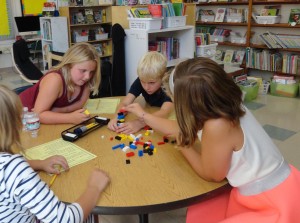 Lego tower in 7 minutes. We’ve worked to create a new perch for “Harry” with time for design and building. Our final project was the penny challenge where groups agreed upon a design and then constructed a pipe cleaner structure that would hold a cup of 50 pennies off the table. Sharing ideas, listening to others, and finally merging the ideas to come to consensus has all been part of our learning process this week. It hasn’t always been pretty, but we have managed.
Lego tower in 7 minutes. We’ve worked to create a new perch for “Harry” with time for design and building. Our final project was the penny challenge where groups agreed upon a design and then constructed a pipe cleaner structure that would hold a cup of 50 pennies off the table. Sharing ideas, listening to others, and finally merging the ideas to come to consensus has all been part of our learning process this week. It hasn’t always been pretty, but we have managed. In and around those challenges we’ve done a little reading and begun our first chapter read-aloud, The One and Only Stuey Lewis. Ask your child to tell you about him and what he’s been doing with his friends. Ask your child how he or she’d feel about having Stuey in our classroom. We’ve also learned a bit about how our brain works and how we can make it grow by having a positive attitude and puzzling things through. We’ve begun to think about the different ways we are smart by learning about the Theory of Multiple Intelligence.
In and around those challenges we’ve done a little reading and begun our first chapter read-aloud, The One and Only Stuey Lewis. Ask your child to tell you about him and what he’s been doing with his friends. Ask your child how he or she’d feel about having Stuey in our classroom. We’ve also learned a bit about how our brain works and how we can make it grow by having a positive attitude and puzzling things through. We’ve begun to think about the different ways we are smart by learning about the Theory of Multiple Intelligence.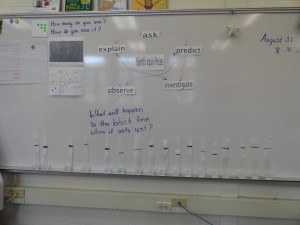 We performed our first experiment. We identified the inquiry process scientists use: ask, predict, investigate, observe, explain…ask,.. and then gave it a go. Our question was: What will happen to the black line? We drew a line on a strip of paper towel with a black marker. We put one end of the strip into a cup of water and taped the other to the white board. When we left school on Wednesday the water had wicked up the strips about 4 and 1/2 inches, but there were no changes in the lines. It will be the first thing we see Thursday morning.
We performed our first experiment. We identified the inquiry process scientists use: ask, predict, investigate, observe, explain…ask,.. and then gave it a go. Our question was: What will happen to the black line? We drew a line on a strip of paper towel with a black marker. We put one end of the strip into a cup of water and taped the other to the white board. When we left school on Wednesday the water had wicked up the strips about 4 and 1/2 inches, but there were no changes in the lines. It will be the first thing we see Thursday morning.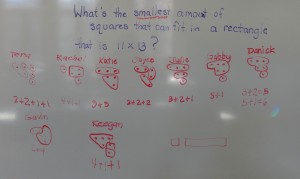 We’ve explored many different topics within mathematics. Our focus has been to uncover that notion that while there might be only one correct answer, there are many ways to get to the solution. First we looked at a configuration of dots – there were 6 but the children found that solution in nine different ways. We also challenged ourselves to find the smallest number of squares an 11×13 rectangle can be divided into. This was tricky. Many of the children didn’t know how to approach that task at first. You can’t cut 11 or 13 in half. Together, the next day, we found two solutions. One solution had 11 squares and the other had 8. We think we might be able to find an even smaller solution. If you like that sort of puzzle, get out some graph paper and try it at home. We also looked at patterns and shapes. Finally we learned about quadrant grids and used them to share information in a range. We’ve had fun examining the many different sides of mathematics. It’s much more that numbers and calculations.
We’ve explored many different topics within mathematics. Our focus has been to uncover that notion that while there might be only one correct answer, there are many ways to get to the solution. First we looked at a configuration of dots – there were 6 but the children found that solution in nine different ways. We also challenged ourselves to find the smallest number of squares an 11×13 rectangle can be divided into. This was tricky. Many of the children didn’t know how to approach that task at first. You can’t cut 11 or 13 in half. Together, the next day, we found two solutions. One solution had 11 squares and the other had 8. We think we might be able to find an even smaller solution. If you like that sort of puzzle, get out some graph paper and try it at home. We also looked at patterns and shapes. Finally we learned about quadrant grids and used them to share information in a range. We’ve had fun examining the many different sides of mathematics. It’s much more that numbers and calculations.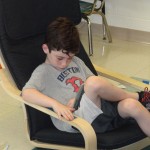
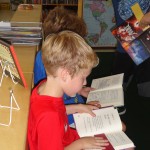 The more I write the more I realize we have done! It has been a full week. In between the picnic and the start of school we welcomed Jayce to our classroom. We are glad to have him with us! Thank you to the Duffy’s for boxes of tissues, wipes and extra snack. That was a generous gift.
The more I write the more I realize we have done! It has been a full week. In between the picnic and the start of school we welcomed Jayce to our classroom. We are glad to have him with us! Thank you to the Duffy’s for boxes of tissues, wipes and extra snack. That was a generous gift.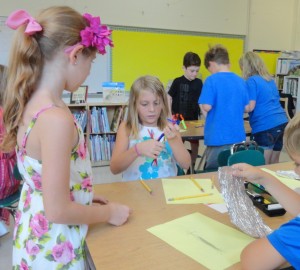 questions or concerns, please don’t hesitate to call, send a note or email.
questions or concerns, please don’t hesitate to call, send a note or email.